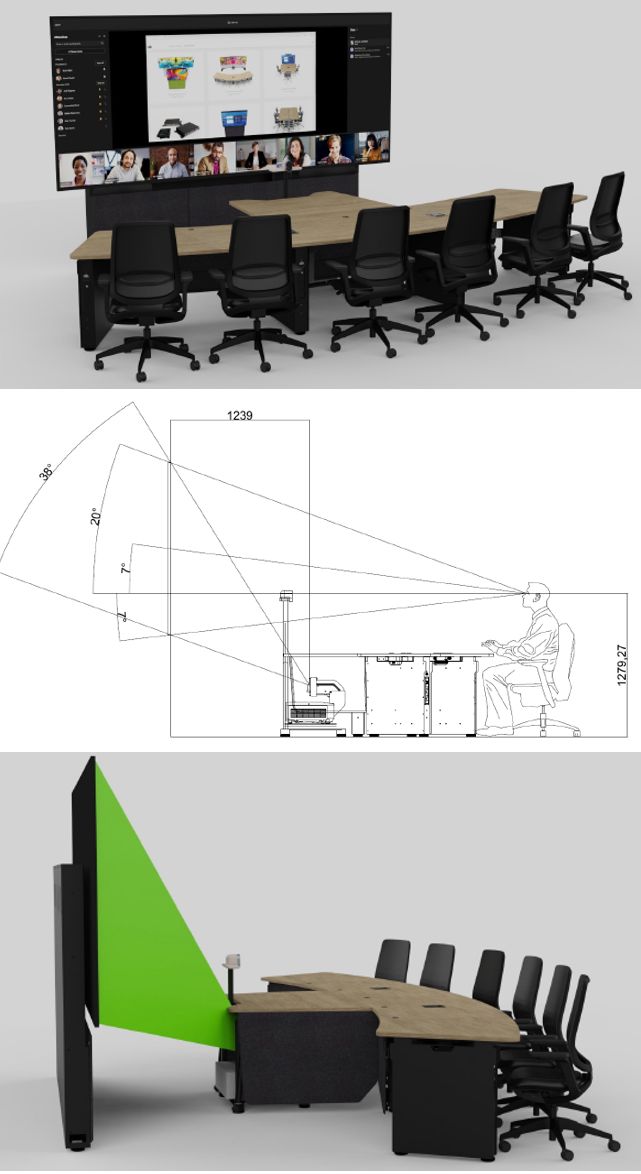Why did Microsoft choose 21:9 aspect ratio…
Why did Microsoft choose 21:9 aspect ratio for Front Row displays in Signature Meeting Room MTRs? And why projection?

The 21:9 aspect ratio actually has a long and recognised pedigree, being close to the old CinemaScope (2.35:1) format. However, that was based on the premise of providing viewers with an immersive experience relative to regular TV watching, by filling out their FOV (field of view).
At some level this is understood, but effectively ignored in forgetting to factor in viewers’ relative positions to the screen. At Visual Displays we understand this and use standards-driven parametric 3D CAD routines, honed over decades of hard-won experience.
When I led AVIXA’s DISCAs standard task group, we had to rewrite the book from scratch - which gave us the chance to add in these factors, essential to human centric design principles. As important as getting the image size right - again, relative to viewer locations - horizontal and vertical viewing angle limits are key. (Sidebar note: Thank God for Google Scholar!)
Relevance to Front Row? Well, early experiments with 32:9 were abandoned - you could see by eye that exceeding DISCAS’s 60 degree horizontal viewing limit made viewing the far side of the image too acute.
But the needs of hybrid meetings are not just about immersivity. We now need multiple content windows - on the same screen - at the same time. The Front Row layout is a paradigm case in addressing complex user needs. (And for those transitioning from their end-of-life Cisco telepresence systems, they are a shoo-in for serious consideration.)
This step change upwards in image size requirements can only currently be achieved with ALR 3-chip laser projection. It’s not only the best option - for the time being anyway - it’s environmentally superior, costing less to buy, install, run and dispose of at end of life. At Visual Displays we are working with Epson to support Microsoft's ever developing vision for meeting and teaching spaces of the future.
A great case study is the new ProjecTABLE product (illustrated below) that we consulted on for Ashton Bentley. We helped them create a product that ticks every box in an integrated human-centred design - that can be ordered with a single SKU (order code).
If you’d like to understand advanced display design principles (and to see how Visual Displays helps clients globally), please download my White Paper ‘MTRs - The Bigger Picture’.

Posted: 9th August 2023